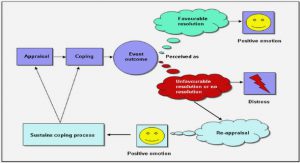Get Complete Project Material File(s) Now! »
The increase of internet as a tool for corporate disclosure has grown in recent years (Pisano et al., 2017). A company´s website is used to communicate to stakeholders, releasing news and respond to problems (Kent & Taylor, 1998). The fast growth of Web 11 2.0 and social media, has driven companies to evolve and adapt new platforms for communication (Waters, Burnett, Lamm, & Lucas, 2009). Sites and social networks within Web 2.0 includes Facebook, Twitter, blogs and Wikipedias (Kaplan & Haenlein, 2010). Scholars have argued that it is possible to gain insight to IC from other than traditional sources, for example LinkedIn and Twitter (Cuozzo et al., 2017). The two-way communication tools, enabled by these platforms have made it a powerful and strategic way for companies to disclose IC, building long-term relationships and improving the communication with stakeholders (Dumay & Guthrie, 2017; Kaplan & Haenlein, 2010; Giacosa, Ferraris, & Bresciani, 2017).
Ownership concentration and HC disclosure
The monitoring level shareholders can have on the management and companies’ voluntary disclosures are influenced by the ownership structure (Eng & Mak, 2003). Conflicts between management of a firm and shareholders have received attention by researchers, since the 1900s (Berle & Means, 1932). The agency theory by Jensen and Meckling (1976), is the most commonly used theory explaining the relationship between ownership structure and IC and HC disclosure (Bukh et al., 2005; Cerbioni & Parbonetti, 13 2007; Firer & Williams, 2005; Li, Pike, & Haniffa, 2008; Oliveira, Rodrigues, & Craig, 2006; Pisano et al., 2017). The ownership structure around the world differs, for example Europeans countries generally have high ownership concentration compared to the US (Pisano et al., 2017). In the agency theory, two types of agency problems exist, type 1 and type 2 agency problems. Type 1 is the conflict between managers and owners and type 2 is the conflict between controlling shareholders and minority shareholders (Fama & Jensen, 1983). Agency theory propose that firms with high concentrated ownership have less conflict between the principal and agent (Fama & Jensen, 1983). The agency theory suggests that firms with dispersed ownership disclose more information to mitigate this problem (Fama & Jensen, 1983).
Method
The sample for this study consisted of 150 listed companies from Sweden and Norway. The 75 largest listed companies ordered by market capitalization were selected from each of the countries. The process of compiling a list of companies was performed 7:th of January 2019. Since this study is focusing on LinkedIn, companies without a LinkedIn page were excluded. Furthermore, financial companies and a few investment fund companies were also excluded, because financial data were unavailable. The final sample therefore consisted of the largest, on the Swedish market, listed company until the 85:th largest company by market capitalization (Appendix 1). Hence, in Sweden 10 companies were excluded, as they did not meet the prerequisites. In Norway, the range were from the largest up until the 108:th largest company (Appendix 1). The reason for a larger drop-off in Norway depends on the larger amount of financial companies.
Pearson correlation
A Pearson correlation test was conducted for this study to investigate the linear relationship between different variables and understand the strength of those relationships. Pearson correlation coefficients can take values between -1 and +1, where values of either -1 or +1 indicates either a perfect negative or a perfect positive correlation. A value of zero indicates no correlation (Andersson, Sweeney, Williams, Freeman, & Shoesmith, 2014). The result of the Pearson correlation test is shown in Table 10. The test was conducted with p-values of 0,05 and 0,01 (1 % respectively 5 % levels of significance). From table 10, two variables (A02 and Size) are significant correlated at p < 0,01 to the dependent variable LinkedIn_HCDisc, and at p < 0,05, Lev is significant correlated to the dependent variable. Moreover, the Pearson correlation test shows that no other variable is significantly correlated to the dependent variable.
Analysis
In comparison to previous studies regarding IC or HC disclosure, this study finds that all companies disclosed at least one disclosure item (Bozzolan et al., 2003; Bukh, 2005; Firer & Williams, 2005; Pisano et al., 2017). Earlier studies have mainly had the focus on annual reports (Hay et al., 2018; Maji & Goswami, 2018), while this study has LinkedIn as the tool to gather the information. Annual reports usually have the same structure, and for example, in the European Union, a directive force companies to disclose different HC and IC information. This study, with LinkedIn as the tool to collect information, has another approach since companies use LinkedIn in different ways and therefore some items can be skewed compared to previous literature.
Table of Contents :
- 1. Introduction
- 1.1 Background
- 1.2 Problem
- 1.3 Purpose
- 1.4 Outline
- 2. Literature Review and Theoretical Framework
- 2.1 HC Disclosure
- 2.2 LinkedIn
- 2.3 Ownership concentration and HC disclosure
- 3. Method
- 3.1 Measure Independent and control variables
- 4. Findings
- 4.1 Descriptive statistics
- 4.2 Pearson correlation
- 4.3 Regression analysis
- 4.4 Multicollinearity
- 5. Analysis
- 5.1 Ownership structure
- 5.2 Correlation and regression analysis
- 5.3 Multicollinearity
- 6. Conclusion
- 7. Discussion
- 8. References
GET THE COMPLETE PROJECT
Human Capital on LinkedIn




